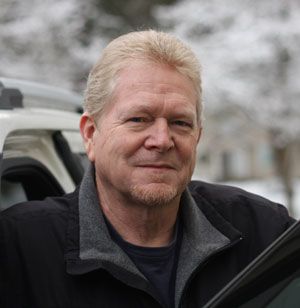Autos versus bicycles
Sadly, there is a strained relationship amongst motor vehicles and bicycles manifested on our roadways. Even more woeful, I see little hope for a harmonious coexistence between the two.
My skepticism grows from several factors, but it’s mainly the prevailing attitudes of many motorists and bicyclists that dampen my optimism. Besides those parties’ stubborn biases, there is also inevitable friction borne of reality: one entity is big and the other is small; one is fast and one is slow; one is “mighty” and the other “weak.”
Sadly, when cars began to rule the roads around 1915, they essentially displaced bicycles. Before that, bicycles had become the best alternative to horses and enjoyed immense popularity nationwide. I have a turn-of-the-century map that shows a network of bicycle paths and trails throughout our country specifically for the two-wheeled conveyances. When cars took over, bicycles were dropped like hot potatoes, and their paths became roads for cars. Bicycles only regained acceptance again in the mid-1930s when they were marketed mainly to children.
In retrospect, if those paths had been left to bicycles, and totally new roads were instead created for cars, the ongoing conflict could have been averted. But instead, to get anywhere, bikes must now contend with cars and trucks on shared roadways — a situation that causes plenty of problems and restricts many people from even considering bicycles as viable transportation.
An independent insurance study solidified my fear that there will never be a future where autos and bicycles share the same roads harmoniously.
The survey’s polling showed what I’ve always suspected — most drivers gripe about law-breaking bikers, and many cyclists complain of distracted or malicious drivers. Drivers’ and riders’ concerns may not represent roadway reality, but perception often dictates events more than reality. The poll showed that the main source of tension for bicyclists are drivers who don’t pay attention to their surroundings, and for drivers, it’s cyclists who dismiss traffic laws that apply to cars and bicycles alike.
Such behavior may not be reality, but it seems prominent enough to be problematic. According to the poll, though 63 percent of Northwest drivers say they’re comfortable driving alongside cyclists, 56 percent say that cyclists ride unpredictably and are the biggest problem for drivers on the road. Again, right or wrong, that’s the perception.
For cyclists, the poll revealed that 58 percent of them believe that drivers who don’t pay attention and those who are simply unaware of road-sharing rules pose the biggest threat to persons riding bicycles.
Of course, cyclists are also concerned with drivers who may have more malicious intent, but fewer name it as the biggest problem with drivers. 27 percent of those polled say that deliberate actions from drivers, such as passing too closely or cutting cyclists off, are the primary cause of tensions on the road.
I always like to remind drivers at the advent of spring that commuters of all kinds, namely pedestrians, bicyclists, motorcyclists, and even motorists, emerge in greater numbers with the burgeoning season.
Regardless of personal perception, it’s the responsibility of those representing all of these forms of locomotion to share the roads safely. Each type of transportation has its own unique qualities and limitations, but we only have one set of roadways. Accommodating those separate needs when encounters occur is a must, if rage, misperception and mayhem are to be avoided.
Readers may contact Bill Love via e-mail at precisiondriving@spokesman.com.
